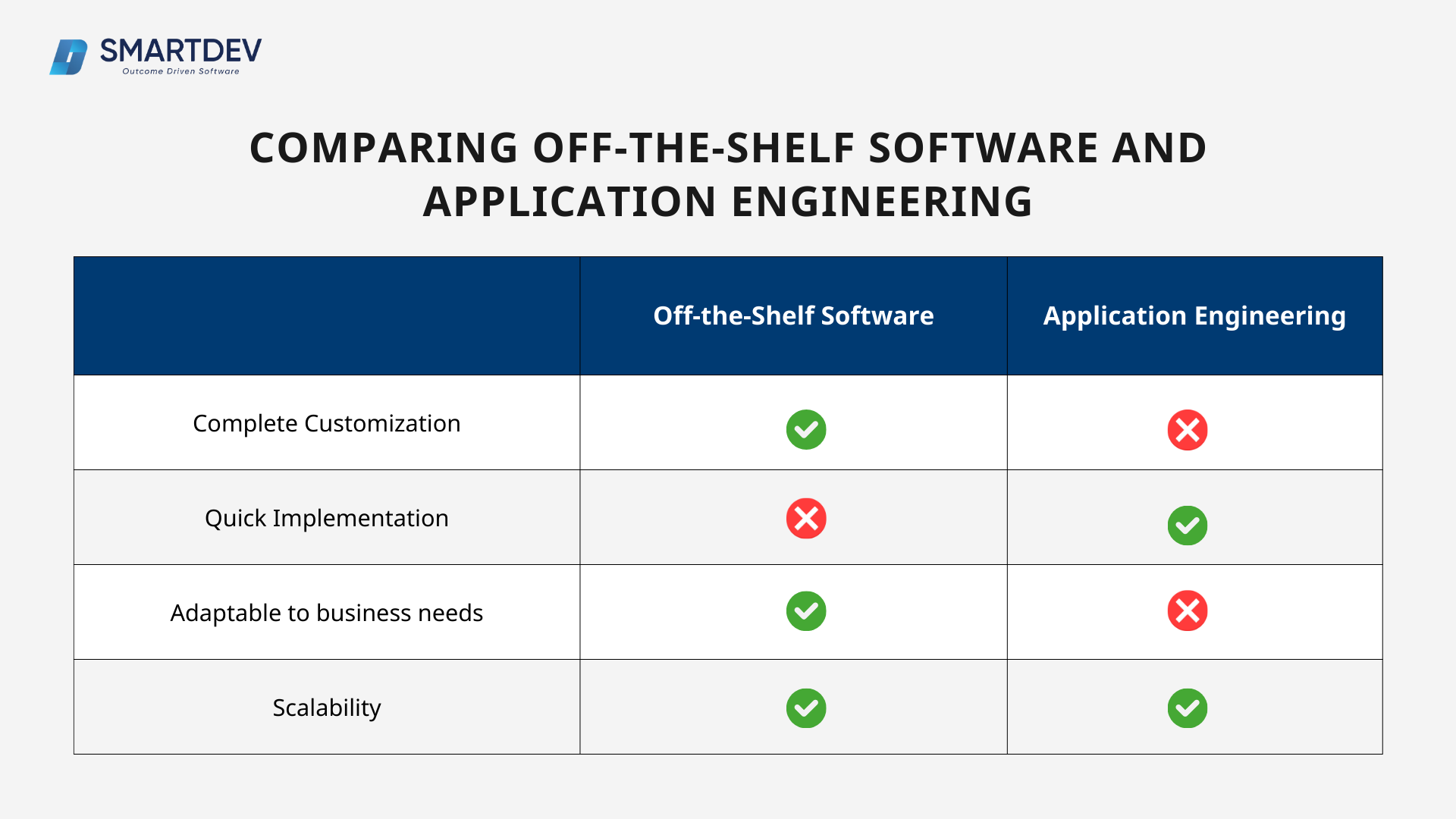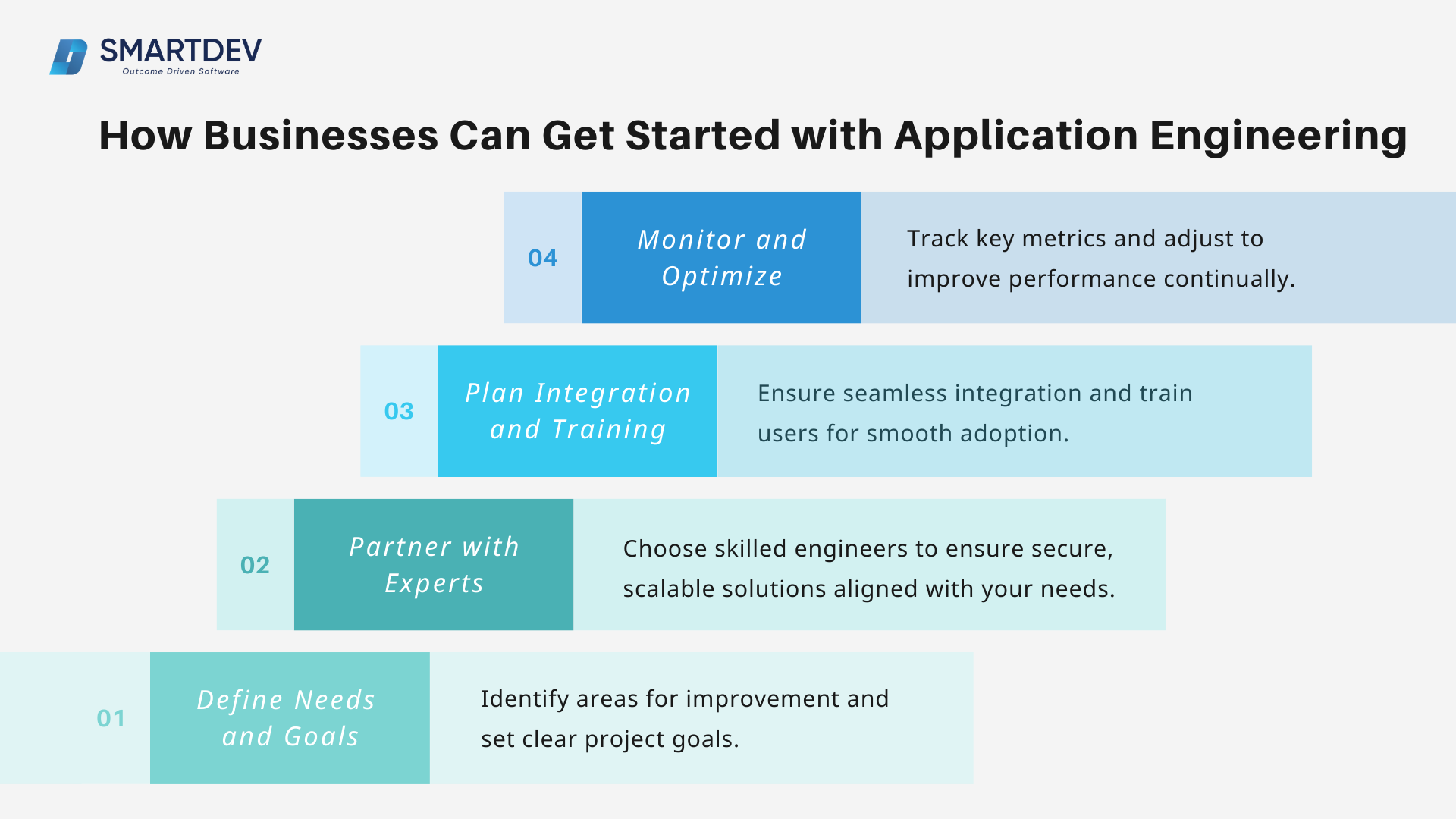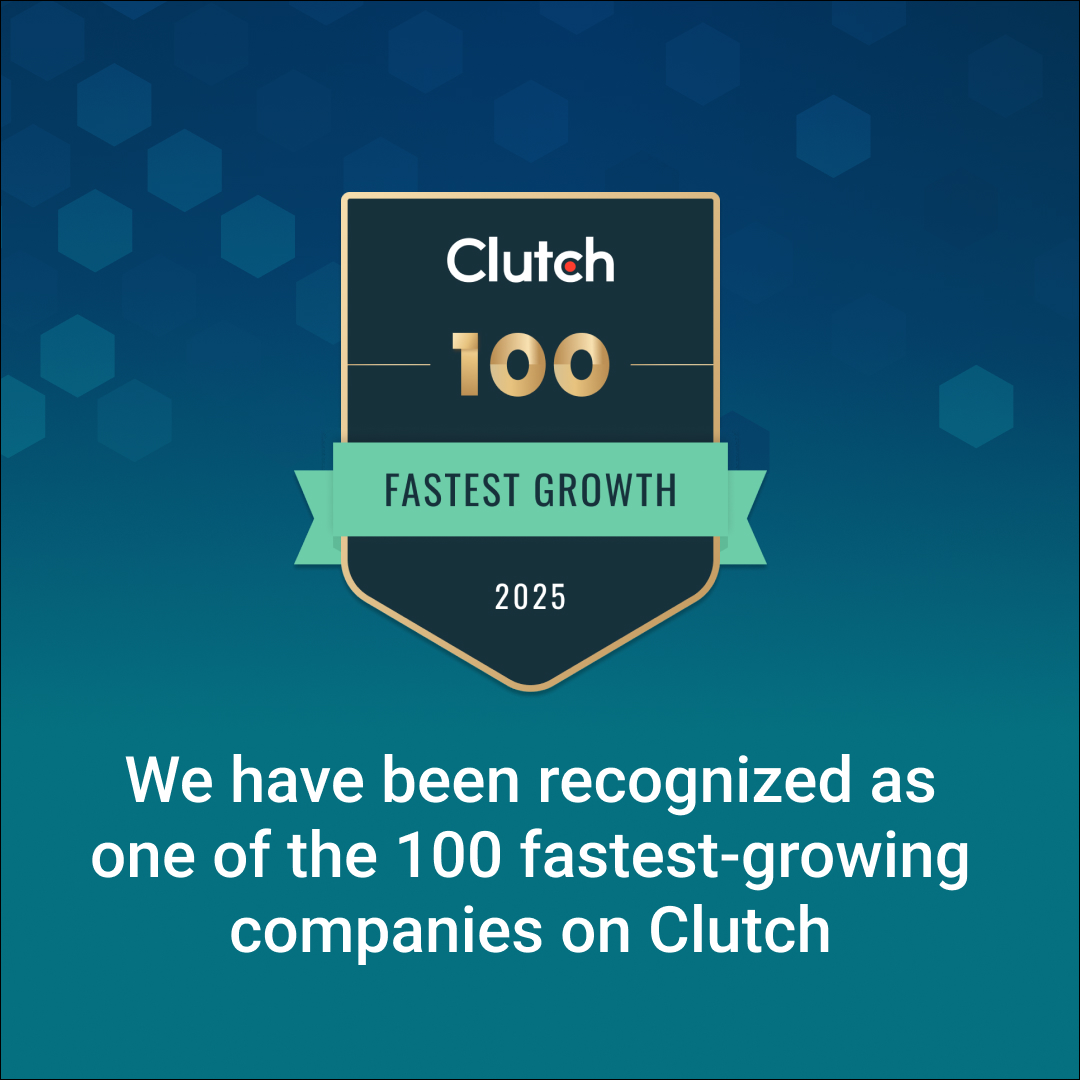
In the digital age, efficiency is everything. Companies are constantly on the lookout for ways to streamline operations, reduce costs, and stay ahead in a competitive market. One increasingly popular solution is application engineering—a specialized field that focuses on designing, building, and optimizing custom software applications tailored to fit specific business needs. Rather than relying on generic software, application engineering provides businesses with tools that adapt to unique workflows, scale with growth, and directly address operational challenges.
This approach has become essential for organizations aiming to cut through complexity and maintain agility. In this post, we’ll explore the key benefits of application engineering. For businesses seeking new ways to boost productivity and enhance operational precision, understanding these essentials is a powerful first step.
What is Application Engineering?
Application engineering is all about creating software applications that meet specific needs within an organization. Think of it as a structured process that helps businesses design, build, and launch software solutions tailored to their unique challenges. Here’s a breakdown of the key steps involved:
- Requirements Gathering: Understanding the needs of stakeholders to define what the software should accomplish.
- Design and Prototyping: Creating models and prototypes to visualize how the final product will function.
- Development: Writing code and building the application based on the defined requirements.
- Testing: Ensuring that the application functions correctly and meets user expectations through rigorous testing.
- Deployment: Implementing the application in a live environment for users.
- Maintenance and Support: Providing ongoing support and updates to ensure optimal performance.
Off-the-shelf software offers ready-made solutions to meet general needs. These solutions are typically more affordable and faster to implement, but they lack the ability to adapt to specific business requirements.
In contrast, application engineering focuses on creating custom software tailored to a company’s unique needs. This personalized approach ensures the software integrates seamlessly into existing processes, offering greater flexibility and alignment with strategic goals.
For example, a retail business using off-the-shelf inventory software might struggle to accommodate unique product tracking needs. With application engineering, they could develop a custom solution that perfectly fits their inventory requirements, leading to improved efficiency and reduced errors.
Off-the-shelf software is a good option for standard needs, but for businesses seeking competitive advantage and efficiency, custom application engineering provides a significant edge.
The Key Benefits of Application Engineering for Businesses
 Application engineering offers several key advantages that make it an ideal solution for businesses looking to optimize their operations and create value in a dynamic environment.
Application engineering offers several key advantages that make it an ideal solution for businesses looking to optimize their operations and create value in a dynamic environment.
1. Enhanced Efficiency
One of the most significant benefits of application engineering is enhanced operational efficiency. By customizing applications to fit specific workflows, organizations can streamline processes, reduce redundancies, and enhance productivity. According to a report by McKinsey & Company, companies that invest in tailored software solutions can see productivity increases of up to 30%. This efficiency translates into faster project completion times and improved resource allocation.
2. Cost Savings
While the initial investment in custom applications may be higher than off-the-shelf solutions, the long-term savings often outweigh these costs. These savings come from reduced maintenance costs, fewer software licensing fees, and minimized downtime due to better-aligned systems.
3. Scalability and Flexibility
Application engineering allows businesses to create scalable solutions that can evolve alongside their operations. This flexibility is vital in today’s fast-paced market environment where adaptability can determine success or failure. Custom applications can be designed with scalability in mind, allowing organizations to add features or expand capabilities as needed without significant overhauls.
4. Improved User Experience
Custom applications are designed with user experience in mind. By involving end-users in the design process through feedback sessions and usability testing, application engineers can create intuitive interfaces that enhance user satisfaction.
5. Competitive Advantage
In a crowded marketplace, having custom solutions can provide a significant competitive edge. Businesses that leverage application engineering can respond more quickly to market changes, implement innovative features faster than competitors using generic solutions, and ultimately deliver better value to their customers.
Ultimately, the flexibility of application engineering allows businesses to create solutions that align with their operational model, ensuring that technology serves their unique goals rather than forcing processes to fit within the constraints of generic software.
Case Study: Sweco’s Implementation of AI for Enhanced Efficiency

Sweco Group empowers its architects and engineers with a timesaving AI assistant built in Azure AI Studio
Background
Sweco is a prominent architecture and engineering firm based in Belgium, managing over 150,000 projects annually. With more than 22,000 consultants, the firm focuses on creating sustainable cities. However, engineers and architects at Sweco often found themselves bogged down by administrative tasks such as document preparation, contract management, and regulatory compliance, which detracted from their creative work.
Implementation
To address these challenges, Sweco sought to automate routine tasks by developing a proprietary AI-driven chatbot named SwecoGPT. Collaborating with Microsoft and utilizing Azure AI Studio, the firm created a solution to automate document creation and enhance search capabilities. The internal chatbot was prototyped and deployed to several hundred employees within a single afternoon, with the full version ready just two weeks later.
Benefits Realized
The implementation of SwecoGPT yielded significant benefits:
- Time Savings: Employees saved two or more hours daily by automating repetitive tasks.
- Increased Productivity: With less time spent on administrative duties, engineers could focus more on creative and strategic aspects of their projects.
- Rapid Deployment: The quick turnaround from prototype to full deployment demonstrated the agility of the development process.
Challenges and Solutions
Despite its success, Sweco faced challenges during implementation. Initial resistance from employees accustomed to traditional workflows posed a hurdle. To combat this, the firm conducted training sessions to familiarize staff with the new system and its benefits. Additionally, ongoing support was provided to address any issues that arose post-deployment, ensuring a smooth transition and encouraging adoption.
This example underscores the transformative power of application engineering, showcasing how AI-driven solutions can optimize operations and elevate employee productivity in firms like Sweco.
Statistics and Market Data on Application Engineering

Application Development Software Market Size, by Type, 2020 – 2030 (USD Billion)
- Application Development Software Market Growth: The global application software development market is experiencing significant growth, with projections indicating it will reach $146.18 billion by 2030, expanding at a compound annual growth rate (CAGR) of 22.8% from 2024 to 2030. This surge underscores the increasing demand for tailored software solutions as businesses seek to move beyond generic software packages.
- ROI and Custom Applications: Investing in custom applications has been shown to yield substantial returns. For instance, a Forrester study found that organizations modernizing applications on Azure Platform-as-a-Service (PaaS) achieved a three-year return on investment (ROI) of 228%, with a payback period of just 15 months.
- Adoption Rates: Gartner states that approximately 91% of businesses are engaged in some form of digital initiative, and many of these initiatives rely heavily on application engineering to succeed.
The Role of Application Engineering in Different Industries
Application engineering is pivotal across multiple sectors, allowing organizations to develop software solutions tailored to their distinctive challenges. Here’s a look at how various industries leverage application engineering:
1. Healthcare
In healthcare, application engineering is utilized to create specialized electronic health record (EHR) systems that streamline patient data management. By customizing these systems, healthcare providers can ensure they meet specific regulatory requirements and integrate seamlessly with existing workflows, ultimately improving patient care and operational efficiency.
2. Finance
The finance industry employs application engineering to develop custom financial management tools that automate processes such as transaction tracking and compliance reporting. For instance, banks can create tailored applications that provide real-time insights into market trends, enabling quicker decision-making and improved risk management.
3. Retail
In retail, businesses harness application engineering to build personalized shopping experiences. Custom inventory management systems can be developed to track stock levels in real-time and provide insights into consumer behavior, leading to more effective marketing strategies and optimized supply chain operations.
4. Manufacturing
Manufacturers use application engineering to enhance production processes through custom software solutions that monitor machinery performance and predict maintenance needs. This proactive approach minimizes downtime and increases overall operational efficiency.
5. Education
Educational institutions utilize application engineering to create learning management systems (LMS) tailored to their specific curricula and student needs. These custom platforms can facilitate personalized learning experiences, track student progress, and streamline administrative tasks.
Future Trends in Application Engineering
As technology evolves, several trends are shaping the future of application engineering:
- Low-Code/No-Code Platforms: These platforms empower users with minimal programming experience to create applications quickly, democratizing software development.
- AI Integration: Incorporating artificial intelligence into applications enhances functionality, enabling features like predictive analytics and automated customer support through chatbots.
- Cloud-Native Applications: The shift towards cloud-native development allows organizations to build scalable applications that can adapt quickly to changing business needs while benefiting from continuous integration and delivery (CI/CD).
Common Challenges in Application Engineering
While the advantages of application engineering are substantial, organizations often encounter challenges during implementation:
- Budget Constraints: High initial costs can deter investment in custom solutions. Conducting thorough cost-benefit analyses can help justify these expenses by highlighting long-term savings.
- Resistance to Change: Employees may resist new technologies due to comfort with existing processes. Providing comprehensive training and ongoing support can ease this transition.
- Integration Issues: Integrating new applications with legacy systems can be complex. A strategic approach, including compatibility assessments prior to implementation, can mitigate these challenges.
How Businesses Can Get Started with Application Engineering
For businesses new to this field, getting started with application engineering can feel complex. Here’s a step-by-step guide to simplify the process and help you lay a solid foundation for a successful project.
1. Identify Pain Points and Define Objectives
The first step in any application engineering project is understanding your unique needs. Identify specific areas within your business that could benefit from improved processes, automation, or enhanced data management. By pinpointing these pain points and clearly defining your objectives, you’ll create a focused, results-oriented engineering project.
- Common Pain Points: Are there repetitive tasks taking up employee time? Do certain processes suffer from delays, errors, or data silos? Could your customer experience improve with more streamlined digital tools?
- Defining Goals: With pain points identified, define clear project goals. Whether it’s to automate a specific process, enable real-time data access, or create a more intuitive customer experience, clear objectives will keep the project aligned with your business priorities.
2. Engage with Experienced Application Engineers
When beginning an application engineering project, working with experts is invaluable. Consulting with an experienced application engineering team like SmartDev ensures that your solution is built to industry best practices, with scalability and security integrated from the start. Consulting partners offer guidance on what’s achievable and suggest the latest tools and technologies best suited for your objectives.
- Choosing the Right Partner: Look for engineering teams with a strong track record in application development for your industry. Experienced engineers can offer insights that align with your specific needs, reducing the chances of costly errors and ensuring a solution that truly adds value.
- Planning the Project Scope: Collaborate with your engineering partner to define the project’s scope, timeline, and resource requirements. A structured approach helps keep the project on track and ensures that every element aligns with your business needs.
3. Plan for System Integration and User Training
An often-overlooked element of application engineering is how the new application will integrate with your existing systems and how users will adapt to it. Consider system compatibility and how different departments will interact with the new application to avoid disruptions and ensure a smooth transition.
- Integration with Current Systems: Work closely with your engineers to ensure that the new application integrates seamlessly with existing software and databases. By planning integration from the start, you’ll avoid data silos and create a consistent user experience.
- User Training and Adoption: Proper training is essential for any successful application launch. Allocate time for training employees to use the new application effectively, and consider creating support materials or assigning ‘application champions’ in each department who can guide others through the new system.
4. Measure Results and Continuously Optimize
Application engineering is not a one-and-done effort; instead, it’s a dynamic process that benefits from continuous monitoring and optimization. After deploying the application, set up key performance indicators (KPIs) to gauge its impact on your business. Regular evaluations can reveal areas for improvement, helping you fine-tune the application for optimal performance as your business evolves.
- Track Key Metrics: Common KPIs might include productivity gains, cost savings, error reductions, or customer satisfaction scores. Regularly monitoring these metrics allows you to see the application’s tangible impact.
- Continuous Improvement: Based on your data insights, make adjustments as needed to enhance the application’s performance. This might involve updating features, refining automation, or adding integrations as your business grows.
By following these steps, you’ll be well-prepared to launch an application engineering project that directly supports your operational goals and fosters long-term growth. With the right approach and expert guidance, application engineering can become a powerful tool for business transformation.
Ready to Transform Your Operations? Contact SmartDev Today
For more information on how custom application engineering can enhance your operations, consider reaching out to SmartDev for a consultation. We have the expertise to tailor solutions that fit your unique business needs and drive measurable results. Visit our case studies to see how we’ve helped other companies achieve success through application engineering.
References:
- Leveraging Artificial Intelligence and Automation for Return on Investment in Innovation – Havard Business Review
-
How Sweco will save 68,000 hours by using robots – Sweco News
-
Digital Transformation: How to Scope and Execute Strategy – Gartner
-
34 Digital Transformation Statistics For 2024 – Digital Adoption
- Off-the-Shelf vs Custom Software: The Ultimate Guide for Business – Fingent
- Engineering Applications of Artificial Intelligence – Exaly Journal









